e5 Ultranet PD Observations - Assessment
0 likes269 views
Staff assessed a PD Vanaja and I delivered on the Ultranet
1 of 14
Download to read offline
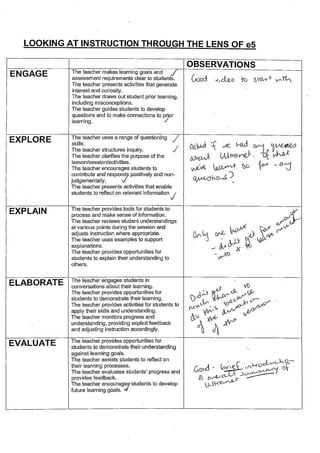
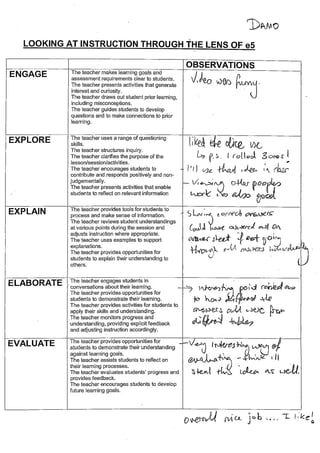
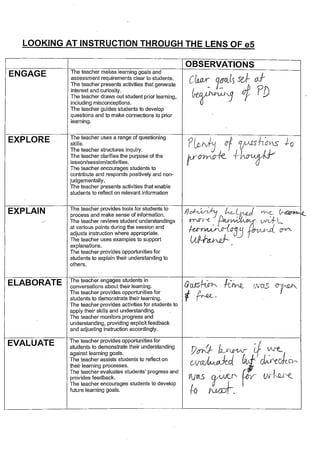
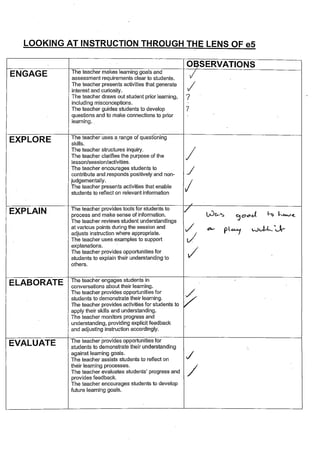
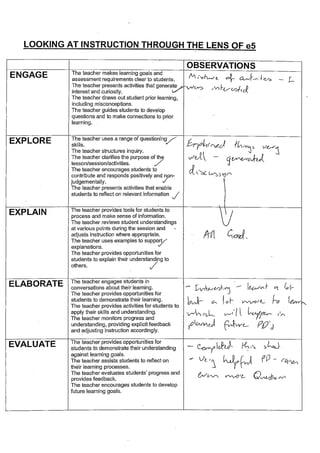
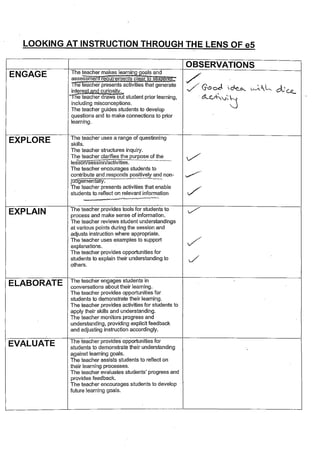
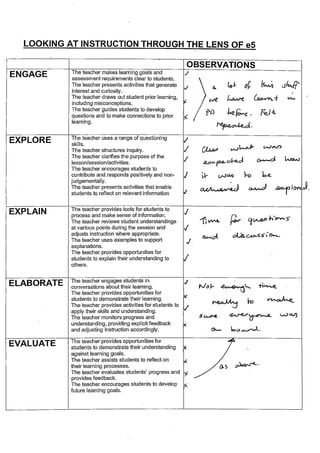

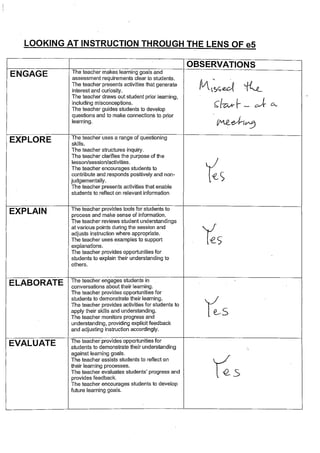

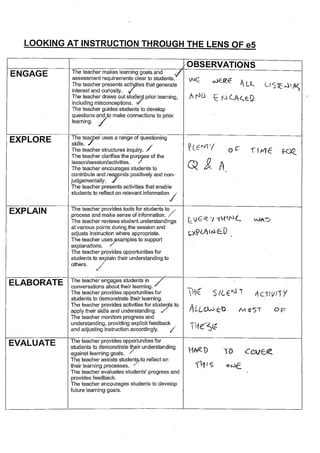
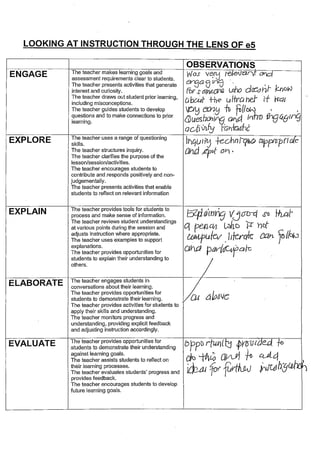
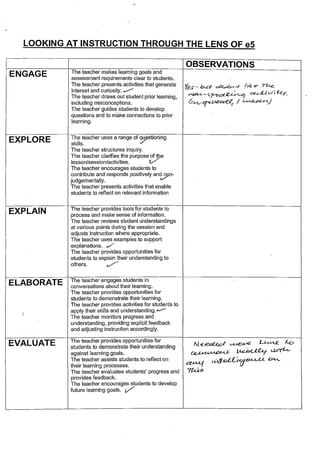

Ad
Recommended
Ultranet booklet session 2
Ultranet booklet session 2coburgmaths
╠²
This document describes the features of an online platform called Ultranet, including a personalized home page for all users, an express page for personal space, a collaborative space for student learning and work, a community space, a professional development space for teachers, and a content storage and search area called "My content".CAS Instructions
CAS Instructionscoburgmaths
╠²
1) The document provides instructions for using the basic features and applications of the TI-nspire CAS calculator, including the calculator, graphing, geometry, lists and spreadsheet, notes, and data analysis applications.
2) Key functions and menus are demonstrated for drawing graphs and shapes, performing calculations and regressions, and moving between applications.
3) Examples show how to enter and manipulate equations, tables, text, and geometric objects, as well as perform statistical analysis and regressions using the built-in data tools.Linear equations part i
Linear equations part icoburgmaths
╠²
The document discusses linear equations and graphing lines. It covers plotting points, calculating slope, writing equations in slope-intercept form, and graphing lines by making a table or using the slope and y-intercept. Methods are presented for finding the equation of a line given two points, the slope and a point, or from a graph.Sam maths pres
Sam maths prescoburgmaths
╠²
The document discusses various types of transformations that can be performed on the graph of the function f(x)=logax. It explains that dilations on the x-axis are shown by coefficients in front of x in the equation, dilations on the y-axis by coefficients in front of the log term. Translations are shown by adding or subtracting terms from x or at the end of the equation for x-axis or y-axis translations respectively. Reflections are shown by changing the sign in front of terms or dividing the entire equation by 1. It also discusses finding degrees from radians and vice versa, finding intercepts of log equations, and determining the composition of two functions.Wedderburn College Newsletter 28th March 2012
Wedderburn College Newsletter 28th March 2012coburgmaths
╠²
The document provides information about upcoming parent-teacher-student interviews at Wedderburn College in Victoria, Australia. It discusses that the interviews will take place on March 29th in Wedderburn and March 28th in Inglewood to discuss student learning. It also mentions several other events happening at the end of the term like a casual day fundraiser and working bees planned for the start of next term.2011 Whole School Action Plan Curriculum PD Presentation
2011 Whole School Action Plan Curriculum PD Presentationcoburgmaths
╠²
This document outlines a curriculum professional development session focused on developing a whole school action plan. Key points discussed include:
- The session focused on improving understanding of the e5 framework and identifying different types of questioning.
- A whole school action plan was proposed to improve student learning outcomes through a collaborative approach focusing on areas like learning intentions, feedback, and higher-order questioning.
- Data was presented indicating the need for improvement, and professional learning teams would be formed to design inquiries around addressing this need through collaborative learning and feedback cycles.Ultranet booklet
Ultranet bookletcoburgmaths
╠²
This document describes the features of an online platform called Ultranet, including a personalized home page for all users, an express page for personal space, a collaborative space for student learning and work, a community space, a professional development space for teachers, and a content storage and search area called "My content".Multi modal think board placemat
Multi modal think board placematcoburgmaths
╠²
This document discusses a multi-modal approach to teaching mathematics that involves exploring, engaging, explaining, elaborating and evaluating using different modes such as numbers, words, stories, real-life examples, symbols, diagrams, and thinking mathematically. It focuses on using calculation, communication, application, manipulation, visualization and strategies to teach mathematical concepts in a technological age.Multi modal think board details
Multi modal think board detailscoburgmaths
╠²
This document discusses using a multi-modal think board approach to teach mathematics. It involves using concrete manipulatives, diagrams, illustrations, pictures, charts and graphs to develop students' mental models and understanding of abstract mathematical concepts. Students learn by doing physical activities, making demonstrations, and using manipulatives like paper, cubes and tiles. Diagrams vary in abstraction from literal pictures to representations using dots. They convey ideas vividly. The multi-modal think board can be used for lesson planning, assessment, integrating technology, and reflecting on student and teacher learning.Thinking and working mathematically
Thinking and working mathematically coburgmaths
╠²
The document discusses using a multi-modal think board approach to teaching mathematics. It describes the six mathematical modes of thinking - number, word, diagram, symbol, real thing, and story. Examples are provided of how to differentiate mathematics instruction for students using open-ended questions within these six modes. The goal is to engage students in thinking and working mathematically in a variety of ways.Kim Solving
Kim Solvingcoburgmaths
╠²
This document provides instructions on how to solve various types of equations, including:
- Linear equations by rearranging to isolate the variable
- Equations using the null factor law to find zeros
- Exponential and logarithmic equations by equating exponents or rearranging into logarithmic form
- Logarithmic functions using properties of logarithms
- Using the "solve" command to solve equations on a calculator
- Circular function equations by rearranging to isolate the variable
It also provides examples and exercises to practice these techniques.Kim Modelling Functions
Kim Modelling Functionscoburgmaths
╠²
The document discusses different types of modeling involving functions. It provides examples of exponential, logarithmic, and circular functions where the variables or constants are missing and points on the graphs are given. Readers are instructed to find the values of the missing variables or constants by inserting the points into the corresponding function equations. Exercises from the textbook are assigned for practice.Aleesha guide to evaluating and converting
Aleesha guide to evaluating and convertingcoburgmaths
╠²
This document provides guidance on evaluating and converting between radians and degrees.
It defines conversion as changing the form of a quantity without changing its value. The angle in radians swept out in one revolution of a circle is 2ŽĆ radians (where ŽĆ radians = 180 degrees).
When converting between radians and degrees, the formula 1 degree = ŽĆ/180 radians is used. For example, to convert 30 degrees to radians, 30 ├Ś ŽĆ/180 = ŽĆ/6 radians.
Evaluation is defined as calculating the numerical value of an expression. Trigonometric functions are evaluated on the unit circle, where P(╬Ė) = (cos╬Ė, sin╬Ė) and symmetry properties allow determining values in eachSample Choc Chip Simulation Report Writing
Sample Choc Chip Simulation Report Writingcoburgmaths
╠²
1. The simulation involved modeling the making of chocolate chip cookies with a random number of chips in each cookie. Data was collected from 5 batches of 10 cookies each to determine the average number of chips used.
2. On average, 88.8 chips were needed per batch, with 19 chips wasted on average since the goal was 7 chips per cookie. Each cookie ended up having an average of 9 chips.
3. The simulation could have used a deck of cards instead of a calculator to generate random numbers by removing some cards and flipping them over randomly. This would allow modeling different chip requirements like 6 chips per cookie.Mathsmate Glossary
Mathsmate Glossarycoburgmaths
╠²
- The glossary defines key mathematical terms like accuracy, acute angle, addition, algebra, area, ascending order, and more.
- Definitions provide the meaning of each term along with visual examples to illustrate concepts like acute triangles, adjacent angles, and alternate interior angles.
- The glossary acts as a reference for mathematical vocabulary, concepts, properties, and notations.Stationary Points Handout
Stationary Points Handoutcoburgmaths
╠²
There are three types of stationary points: maximum points, minimum points, and points of inflection. A maximum point occurs when the gradient is positive on one side and negative on the other. A minimum point occurs when the gradient is negative on one side and positive on the other. A point of inflection occurs when the gradient is zero but the second derivative is also zero. To determine the type of stationary point, the gradient on each side is considered and the second derivative at that point is examined. Sketching the curve involves finding any stationary points, where the curve meets the axes, and using the information to plot the general shape.Equations of Tangents and Normals
Equations of Tangents and Normalscoburgmaths
╠²
This document provides questions about finding the equations of tangents and normals to various polynomial functions at given points. It contains 8 parts with multiple questions each about finding the equations of tangents to polynomial curves and normals to polynomial curves at specified points using differentiation.Differentiation of Polynomials Questions
Differentiation of Polynomials Questionscoburgmaths
╠²
This document provides 30 problems involving differentiating polynomials, where the task is to find the derivative (dy/dx) of each given polynomial function y=f(x). The polynomials range in degree from 1 to 4 and include both standard and fractional exponent terms. The problems are presented systematically to comprehensively cover the basic differentiation rules for polynomials.ECONOMICS, DISASTER MANAGEMENT, ROAD SAFETY - STUDY MATERIAL [10TH]
ECONOMICS, DISASTER MANAGEMENT, ROAD SAFETY - STUDY MATERIAL [10TH]SHERAZ AHMAD LONE
╠²
This study material for Class 10th covers the core subjects of Economics, Disaster Management, and Road Safety Education, developed strictly in line with the JKBOSE textbook. It presents the content in a simplified, structured, and student-friendly format, ensuring clarity in concepts. The material includes reframed explanations, flowcharts, infographics, and key point summaries to support better understanding and retention. Designed for classroom teaching and exam preparation, it aims to enhance comprehension, critical thinking, and practical awareness among students.VCE Literature Section A Exam Response Guide
VCE Literature Section A Exam Response Guidejpinnuck
╠²
This practical guide shows students of Unit 3&4 VCE Literature how to write responses to Section A of the exam. Including a range of examples writing about different types of texts, this guide:
*Breaks down and explains what Q1 and Q2 tasks involve and expect
*Breaks down example responses for each question
*Explains and scaffolds students to write responses for each question
*Includes a comprehensive range of sentence starters and vocabulary for responding to each question
*Includes critical theory vocabulary╠² lists to support Q2 responsesMore Related Content
More from coburgmaths (20)
2011 Whole School Action Plan Curriculum PD Presentation
2011 Whole School Action Plan Curriculum PD Presentationcoburgmaths
╠²
This document outlines a curriculum professional development session focused on developing a whole school action plan. Key points discussed include:
- The session focused on improving understanding of the e5 framework and identifying different types of questioning.
- A whole school action plan was proposed to improve student learning outcomes through a collaborative approach focusing on areas like learning intentions, feedback, and higher-order questioning.
- Data was presented indicating the need for improvement, and professional learning teams would be formed to design inquiries around addressing this need through collaborative learning and feedback cycles.Ultranet booklet
Ultranet bookletcoburgmaths
╠²
This document describes the features of an online platform called Ultranet, including a personalized home page for all users, an express page for personal space, a collaborative space for student learning and work, a community space, a professional development space for teachers, and a content storage and search area called "My content".Multi modal think board placemat
Multi modal think board placematcoburgmaths
╠²
This document discusses a multi-modal approach to teaching mathematics that involves exploring, engaging, explaining, elaborating and evaluating using different modes such as numbers, words, stories, real-life examples, symbols, diagrams, and thinking mathematically. It focuses on using calculation, communication, application, manipulation, visualization and strategies to teach mathematical concepts in a technological age.Multi modal think board details
Multi modal think board detailscoburgmaths
╠²
This document discusses using a multi-modal think board approach to teach mathematics. It involves using concrete manipulatives, diagrams, illustrations, pictures, charts and graphs to develop students' mental models and understanding of abstract mathematical concepts. Students learn by doing physical activities, making demonstrations, and using manipulatives like paper, cubes and tiles. Diagrams vary in abstraction from literal pictures to representations using dots. They convey ideas vividly. The multi-modal think board can be used for lesson planning, assessment, integrating technology, and reflecting on student and teacher learning.Thinking and working mathematically
Thinking and working mathematically coburgmaths
╠²
The document discusses using a multi-modal think board approach to teaching mathematics. It describes the six mathematical modes of thinking - number, word, diagram, symbol, real thing, and story. Examples are provided of how to differentiate mathematics instruction for students using open-ended questions within these six modes. The goal is to engage students in thinking and working mathematically in a variety of ways.Kim Solving
Kim Solvingcoburgmaths
╠²
This document provides instructions on how to solve various types of equations, including:
- Linear equations by rearranging to isolate the variable
- Equations using the null factor law to find zeros
- Exponential and logarithmic equations by equating exponents or rearranging into logarithmic form
- Logarithmic functions using properties of logarithms
- Using the "solve" command to solve equations on a calculator
- Circular function equations by rearranging to isolate the variable
It also provides examples and exercises to practice these techniques.Kim Modelling Functions
Kim Modelling Functionscoburgmaths
╠²
The document discusses different types of modeling involving functions. It provides examples of exponential, logarithmic, and circular functions where the variables or constants are missing and points on the graphs are given. Readers are instructed to find the values of the missing variables or constants by inserting the points into the corresponding function equations. Exercises from the textbook are assigned for practice.Aleesha guide to evaluating and converting
Aleesha guide to evaluating and convertingcoburgmaths
╠²
This document provides guidance on evaluating and converting between radians and degrees.
It defines conversion as changing the form of a quantity without changing its value. The angle in radians swept out in one revolution of a circle is 2ŽĆ radians (where ŽĆ radians = 180 degrees).
When converting between radians and degrees, the formula 1 degree = ŽĆ/180 radians is used. For example, to convert 30 degrees to radians, 30 ├Ś ŽĆ/180 = ŽĆ/6 radians.
Evaluation is defined as calculating the numerical value of an expression. Trigonometric functions are evaluated on the unit circle, where P(╬Ė) = (cos╬Ė, sin╬Ė) and symmetry properties allow determining values in eachSample Choc Chip Simulation Report Writing
Sample Choc Chip Simulation Report Writingcoburgmaths
╠²
1. The simulation involved modeling the making of chocolate chip cookies with a random number of chips in each cookie. Data was collected from 5 batches of 10 cookies each to determine the average number of chips used.
2. On average, 88.8 chips were needed per batch, with 19 chips wasted on average since the goal was 7 chips per cookie. Each cookie ended up having an average of 9 chips.
3. The simulation could have used a deck of cards instead of a calculator to generate random numbers by removing some cards and flipping them over randomly. This would allow modeling different chip requirements like 6 chips per cookie.Mathsmate Glossary
Mathsmate Glossarycoburgmaths
╠²
- The glossary defines key mathematical terms like accuracy, acute angle, addition, algebra, area, ascending order, and more.
- Definitions provide the meaning of each term along with visual examples to illustrate concepts like acute triangles, adjacent angles, and alternate interior angles.
- The glossary acts as a reference for mathematical vocabulary, concepts, properties, and notations.Stationary Points Handout
Stationary Points Handoutcoburgmaths
╠²
There are three types of stationary points: maximum points, minimum points, and points of inflection. A maximum point occurs when the gradient is positive on one side and negative on the other. A minimum point occurs when the gradient is negative on one side and positive on the other. A point of inflection occurs when the gradient is zero but the second derivative is also zero. To determine the type of stationary point, the gradient on each side is considered and the second derivative at that point is examined. Sketching the curve involves finding any stationary points, where the curve meets the axes, and using the information to plot the general shape.Equations of Tangents and Normals
Equations of Tangents and Normalscoburgmaths
╠²
This document provides questions about finding the equations of tangents and normals to various polynomial functions at given points. It contains 8 parts with multiple questions each about finding the equations of tangents to polynomial curves and normals to polynomial curves at specified points using differentiation.Differentiation of Polynomials Questions
Differentiation of Polynomials Questionscoburgmaths
╠²
This document provides 30 problems involving differentiating polynomials, where the task is to find the derivative (dy/dx) of each given polynomial function y=f(x). The polynomials range in degree from 1 to 4 and include both standard and fractional exponent terms. The problems are presented systematically to comprehensively cover the basic differentiation rules for polynomials.Recently uploaded (20)
ECONOMICS, DISASTER MANAGEMENT, ROAD SAFETY - STUDY MATERIAL [10TH]
ECONOMICS, DISASTER MANAGEMENT, ROAD SAFETY - STUDY MATERIAL [10TH]SHERAZ AHMAD LONE
╠²
This study material for Class 10th covers the core subjects of Economics, Disaster Management, and Road Safety Education, developed strictly in line with the JKBOSE textbook. It presents the content in a simplified, structured, and student-friendly format, ensuring clarity in concepts. The material includes reframed explanations, flowcharts, infographics, and key point summaries to support better understanding and retention. Designed for classroom teaching and exam preparation, it aims to enhance comprehension, critical thinking, and practical awareness among students.VCE Literature Section A Exam Response Guide
VCE Literature Section A Exam Response Guidejpinnuck
╠²
This practical guide shows students of Unit 3&4 VCE Literature how to write responses to Section A of the exam. Including a range of examples writing about different types of texts, this guide:
*Breaks down and explains what Q1 and Q2 tasks involve and expect
*Breaks down example responses for each question
*Explains and scaffolds students to write responses for each question
*Includes a comprehensive range of sentence starters and vocabulary for responding to each question
*Includes critical theory vocabulary╠² lists to support Q2 responsesRomanticism in Love and Sacrifice An Analysis of Oscar WildeŌĆÖs The Nightingal...
Romanticism in Love and Sacrifice An Analysis of Oscar WildeŌĆÖs The Nightingal...KaryanaTantri21
╠²
The story revolves around a college student who despairs not having a red rose as a condition for dancing with the girl he loves. The nightingale hears his complaint and offers to create the red rose at the cost of his life. He sang a love song all night with his chest stuck to the thorns of the rose tree. Finally, the red rose grew, but his sacrifice was in vain. The girl rejected the flower because it didnŌĆÖt match her outfit and preferred a jewellery gift. The student threw the flower on the street and returned to studying philosophyHow to Manage Different Customer Addresses in Odoo 18 Accounting
How to Manage Different Customer Addresses in Odoo 18 AccountingCeline George
╠²
A business often have customers with multiple locations such as office, warehouse, home addresses and this feature allows us to associate with different addresses with each customer streamlining the process of creating sales order invoices and delivery orders.List View Components in Odoo 18 - Odoo ║▌║▌▀Żs
List View Components in Odoo 18 - Odoo ║▌║▌▀ŻsCeline George
╠²
In Odoo, there are many types of views possible like List view, Kanban view, Calendar view, Pivot view, Search view, etc.
The major change that introduced in the Odoo 18 technical part in creating views is the tag <tree> got replaced with the <list> for creating list views. University of Ghana Cracks Down on Misconduct: Over 100 Students Sanctioned
University of Ghana Cracks Down on Misconduct: Over 100 Students SanctionedKweku Zurek
╠²
University of Ghana Cracks Down on Misconduct: Over 100 Students Sanctioned
OBSESSIVE COMPULSIVE DISORDER.pptx IN 5TH SEMESTER B.SC NURSING, 2ND YEAR GNM...
OBSESSIVE COMPULSIVE DISORDER.pptx IN 5TH SEMESTER B.SC NURSING, 2ND YEAR GNM...parmarjuli1412
╠²
OBSESSIVE COMPULSIVE DISORDER INCLUDED TOPICS ARE INTRODUCTION, DEFINITION OF OBSESSION, DEFINITION OF COMPULSION, MEANING OF OBSESSION AND COMPULSION, DEFINITION OF OBSESSIVE COMPULSIVE DISORDER, EPIDERMIOLOGY OF OCD, ETIOLOGICAL FACTORS OF OCD, CLINICAL SIGN AND SYMPTOMS OF OBSESSION AND COMPULSION, MANAGEMENT INCLUDED PHARMACOTHERAPY(ANTIDEPRESSANT DRUG+ANXIOLYTIC DRUGS), PSYCHOTHERAPY, NURSING MANAGEMENT(ASSESSMENT+DIAGNOSIS+NURSING INTERVENTION+EVALUATION)) SCHIZOPHRENIA OTHER PSYCHOTIC DISORDER LIKE Persistent delusion/Capgras syndr...
SCHIZOPHRENIA OTHER PSYCHOTIC DISORDER LIKE Persistent delusion/Capgras syndr...parmarjuli1412
╠²
SCHIZOPHRENIA INCLUDED TOPIC IS INTRODUCTION, DEFINITION OF GENERAL TERM IN PSYCHIATRIC, THEN DIFINITION OF SCHIZOPHRENIA, EPIDERMIOLOGY, ETIOLOGICAL FACTORS, CLINICAL FEATURE(SIGN AND SYMPTOMS OF SCHIZOPHRENIA), CLINICAL TYPES OF SCHIZOPHRENIA, DIAGNOSIS, INVESTIGATION, TREATMENT MODALITIES(PHARMACOLOGICAL MANAGEMENT, PSYCHOTHERAPY, ECT, PSYCHO-SOCIO-REHABILITATION), NURSING MANAGEMENT(ASSESSMENT,DIAGNOSIS,NURSING INTERVENTION,AND EVALUATION), OTHER PSYCHOTIC DISORDER LIKE Persistent delusion/Capgras syndrome(The Delusion of Doubles)/Acute and Transient Psychotic Disorders/Induced Delusional Disorders/Schizoaffective Disorder /CAPGRAS SYNDROME(DELUSION OF DOUBLE), GERIATRIC CONSIDERATION, FOLLOW UP, HOMECARE AND REHABILITATION OF THE PATIENT, F-BLOCK ELEMENTS POWER POINT PRESENTATIONS
F-BLOCK ELEMENTS POWER POINT PRESENTATIONSmprpgcwa2024
╠²
F-block elements are a group of elements in the periodic table that have partially filled f-orbitals. They are also known as inner transition elements. F-block elements are divided into two series:
1.Lanthanides (La- Lu) These elements are also known as rare earth elements.
2.Actinides (Ac- Lr): These elements are radioactive and have complex electronic configurations.
F-block elements exhibit multiple oxidation states due to the availability of f-orbitals.
2. Many f-block compounds are colored due to f-f transitions.
3. F-block elements often exhibit paramagnetic or ferromagnetic behavior.4. Actinides are radioactive.
F-block elements are used as catalysts in various industrial processes.
Actinides are used in nuclear reactors and nuclear medicine.
F-block elements are used in lasers and phosphors due to their luminescent properties.
F-block elements have unique electronic and magnetic properties.M&A5 Q1 1 differentiate evolving early Philippine conventional and contempora...
M&A5 Q1 1 differentiate evolving early Philippine conventional and contempora...ErlizaRosete
╠²
MAPEH 6 QI WEEK IIIT KGP Quiz Week 2024 Sports Quiz (Prelims + Finals)
IIT KGP Quiz Week 2024 Sports Quiz (Prelims + Finals)IIT Kharagpur Quiz Club
╠²
The document outlines the format for the Sports Quiz at Quiz Week 2024, covering various sports & games and requiring participants to Answer without external sources. It includes specific details about question types, scoring, and examples of quiz questions. The document emphasizes fair play and enjoyment of the quiz experience.LAZY SUNDAY QUIZ "A GENERAL QUIZ" JUNE 2025 SMC QUIZ CLUB, SILCHAR MEDICAL CO...
LAZY SUNDAY QUIZ "A GENERAL QUIZ" JUNE 2025 SMC QUIZ CLUB, SILCHAR MEDICAL CO...Ultimatewinner0342
╠²
¤¦Ā Lazy Sunday Quiz | General Knowledge Trivia by SMC Quiz Club ŌĆō Silchar Medical College
Presenting the Lazy Sunday Quiz, a fun and thought-provoking general knowledge quiz created by the SMC Quiz Club of Silchar Medical College & Hospital (SMCH). This quiz is designed for casual learners, quiz enthusiasts, and competitive teams looking for a diverse, engaging set of questions with clean visuals and smart clues.
¤Ä» What is the Lazy Sunday Quiz?
The Lazy Sunday Quiz is a light-hearted yet intellectually rewarding quiz session held under the SMC Quiz Club banner. ItŌĆÖs a general quiz covering a mix of current affairs, pop culture, history, India, sports, medicine, science, and more.
Whether youŌĆÖre hosting a quiz event, preparing a session for students, or just looking for quality trivia to enjoy with friends, this PowerPoint deck is perfect for you.
¤ōŗ Quiz Format & Structure
Total Questions: ~50
Types: MCQs, one-liners, image-based, visual connects, lateral thinking
Rounds: Warm-up, Main Quiz, Visual Round, Connects (optional bonus)
Design: Simple, clear slides with answer explanations included
Tools Needed: Just a projector or screen ŌĆō ready to use!
¤¦Ā Who Is It For?
College quiz clubs
School or medical students
Teachers or faculty for classroom engagement
Event organizers needing quiz content
Quizzers preparing for competitions
Freelancers building quiz portfolios
¤ÆĪ Why Use This Quiz?
Ready-made, high-quality content
Curated with lateral thinking and storytelling in mind
Covers both academic and pop culture topics
Designed by a quizzer with real event experience
Usable in inter-college fests, informal quizzes, or Sunday brain workouts
¤ōÜ About the Creators
This quiz has been created by Rana Mayank Pratap, an MBBS student and quizmaster at SMC Quiz Club, Silchar Medical College. The club aims to promote a culture of curiosity and smart thinking through weekly and monthly quiz events.
¤öŹ SEO Tags:
quiz, general knowledge quiz, trivia quiz, ║▌║▌▀ŻShare quiz, college quiz, fun quiz, medical college quiz, India quiz, pop culture quiz, visual quiz, MCQ quiz, connect quiz, science quiz, current affairs quiz, SMC Quiz Club, Silchar Medical College
¤ōŻ Reuse & Credit
YouŌĆÖre free to use or adapt this quiz for your own events or sessions with credit to:
SMC Quiz Club ŌĆō Silchar Medical College & Hospital
Curated by: Rana Mayank PratapPhoto chemistry Power Point Presentation
Photo chemistry Power Point Presentationmprpgcwa2024
╠²
Photochemistry is the branch of chemistry that deals with the study of chemical reactions and processes initiated by light.
Photochemistry involves the interaction of light with molecules, leading to electronic excitation. Energy from light is transferred to molecules, initiating chemical reactions.
Photochemistry is used in solar cells to convert light into electrical energy.
It is used Light-driven chemical reactions for environmental remediation and synthesis. Photocatalysis helps in pollution abatement and environmental cleanup. Photodynamic therapy offers a targeted approach to treating diseases It is used in Light-activated treatment for cancer and other diseases.
Photochemistry is used to synthesize complex organic molecules.
Photochemistry contributes to the development of sustainable energy solutions.Paper 106 | Ambition and Corruption: A Comparative Analysis of ŌĆśThe Great Gat...
Paper 106 | Ambition and Corruption: A Comparative Analysis of ŌĆśThe Great Gat...Rajdeep Bavaliya
╠²
Dive into the glittering allure and hidden rot of the American Dream as we compare Jay GatsbyŌĆÖs lofty ambitions with Jordan BelfortŌĆÖs brazen excess. Uncover how both characters chase success at the cost of their integrity and ultimately pay the price for unchecked desire. Which downfall resonates moreŌĆöGatsbyŌĆÖs doomed romance or BelfortŌĆÖs scandalous spiral? Hit like if youŌĆÖve ever chased a dream, and follow for more literary-versus-film showdowns!
M.A. Sem - 2 | Presentation
Presentation Season - 2
Paper - 106: The Twentieth Century Literature: 1900 to World War II
Submitted Date: April 3, 2025
Paper Name: The Twentieth Century Literature: 1900 to World War II
Topic: Ambition and Corruption: A Comparative Analysis of ŌĆśThe Great GatsbyŌĆÖ and ŌĆśThe Wolf of Wall StreetŌĆÖ
[Please copy the link and paste it into any web browser to access the content.]
Video Link: https://youtu.be/4mXmSVjTLt8
For a more in-depth discussion of this presentation, please visit the full blog post at the following link: https://rajdeepbavaliya2.blogspot.com/2025/04/ambition-and-corruption-a-comparative-analysis-of-the-great-gatsby-and-the-wolf-of-wall-street.html
Please visit this blog to explore additional presentations from this season:
Hashtags:
#AmericanDream #GreatGatsby #WolfOfWallStreet #AmbitionAndCorruption #LiteratureVsFilm #Fitzgerald #Scorsese #JayGatsby #JordanBelfort #DreamOrDownfall
Keyword Tags:
The Great Gatsby, Wolf of Wall Street, American Dream analysis, ambition corruption, Gatsby vs. Belfort, F. Scott Fitzgerald themes, Martin Scorsese film, literary comparison, movie vs. novel, moral critiqueCRYPTO TRADING COURSE BY FINANCEWORLD.IO
CRYPTO TRADING COURSE BY FINANCEWORLD.IOAndrewBorisenko3
╠²
Unlock the Secrets of Crypto Trading with FinanceWorld.io!
Are you ready to dive into the exciting world of cryptocurrency trading? This comprehensive course by FinanceWorld.io is designed for beginners and intermediate traders who want to master the fundamentals of crypto markets, technical analysis, risk management, and trading strategies.
What youŌĆÖll learn:
Introduction to blockchain and cryptocurrencies
How crypto markets work
Setting up wallets and trading accounts securely
Understanding exchanges and order types
Reading charts and technical analysis basics
Essential indicators and market signals
Risk management and portfolio diversification
Real-life trading strategies and case studies
Common mistakes and how to avoid them
Who should view this course?
Aspiring crypto traders
Investors seeking additional income sources
Anyone curious about the future of decentralized finance
Why FinanceWorld.io?
Our experts make complex concepts simple, helping you gain the confidence to navigate volatile markets and capitalize on opportunities.
Ready to start your crypto journey?
View this slide deck now and take your first step towards becoming a successful crypto trader with FinanceWorld.io!2025 June Year 9 Presentation: Subject selection.pptx
2025 June Year 9 Presentation: Subject selection.pptxmansk2
╠²
2025 June Year 9 Presentation: Subject selectionGreat Governors' Send-Off Quiz 2025 Prelims IIT KGP
Great Governors' Send-Off Quiz 2025 Prelims IIT KGPIIT Kharagpur Quiz Club
╠²
Prelims of the Great Governors' Send-Off Quiz 2025 hosted by the outgoing governors.
QMs: Aarushi, Aatir, Aditya, ArnavAprendendo Arquitetura Framework Salesforce - Dia 02
Aprendendo Arquitetura Framework Salesforce - Dia 02Mauricio Alexandre Silva
╠²
Aprendendo Arquitetura Framework Salesforce - Dia 02
LAZY SUNDAY QUIZ "A GENERAL QUIZ" JUNE 2025 SMC QUIZ CLUB, SILCHAR MEDICAL CO...
LAZY SUNDAY QUIZ "A GENERAL QUIZ" JUNE 2025 SMC QUIZ CLUB, SILCHAR MEDICAL CO...Ultimatewinner0342
╠²
Paper 106 | Ambition and Corruption: A Comparative Analysis of ŌĆśThe Great Gat...
Paper 106 | Ambition and Corruption: A Comparative Analysis of ŌĆśThe Great Gat...Rajdeep Bavaliya
╠²
Ad